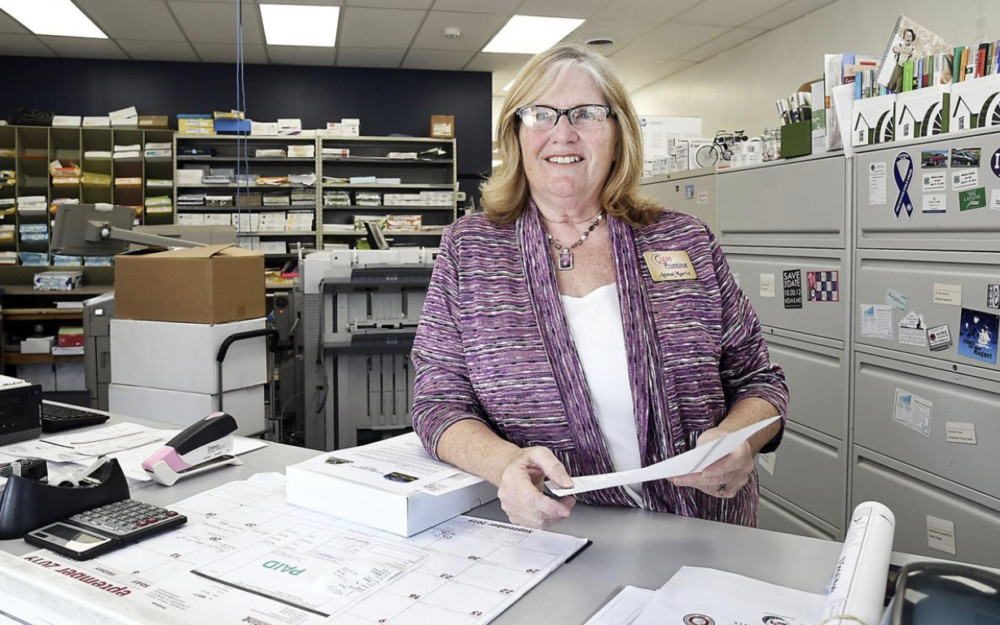By Andy Knight
The Herald Bulletin, Anderson, Ind.
WWR Article Summary (tl;dr) Reporter Andy Knight takes a look at the state of women-owned businesses through the lens of an entrepreneur from Indiana who was willing to take the risk.
ANDERSON
When she purchased a PIP Printing franchise and reopened it as JAM Printing in 2010, AnnaMarie Hinton bet the farm on the venture’s success — literally.
Hinton had left her job as a production director at The Herald Bulletin the year before, and several friends and clients urged her to go into business for herself. Amid tenuous economic conditions in the wake of the Great Recession in 2009, she opened her own print shop.
“Within nine months, the previous owner at PIP Printing approached us and asked us to buy her out,” Hinton said. “We were actually advised that it was probably not a good business venture (at the time), but I had my client base, my business partner had his, and PIP had theirs.”
To finance the deal, the previous owner of PIP Printing agreed to hold the deed to a 10-acre farm Hinton and her husband owned while she paid for the business.
“My husband was more nervous than I was. It took him a little more time to sign that bottom line than I did,” Hinton recalled with a laugh. “But I was so determined to make it work. I love my job. I enjoy the customers I’ve met and the friends I’ve made. It’s comfort for me, and I enjoy what I do.”
As female entrepreneurship continues to rise, women like Hinton who want to go into business for themselves are confronted with the challenges of raising startup capital.
While experts say a wide variety of factors ultimately contributes to the success or failure of an investment, some industries demand higher initial investments than others. That helps explain higher percentages of female business owners in areas such as educational services, health care and social assistance, according to data from the U.S. Census Bureau’s 2017 American Community Survey.
Psychology could also play a role.
“In a lot of situations, it’s not so much that capital is not available, but women tend to be more risk averse,” says Jacqueline Troy, director of the Central Indiana Women’s Business Center, a program providing resources for women to plan and grow businesses. “The percentage of women willing to take on debt is much smaller, and a lot of those women who take that risk want to try and bootstrap it.”
In Madison County and nearby areas, resources for women considering starting a business are plentiful, according to Troy.
Bankable, the Flagship Enterprise Center’s nonprofit lending arm, has become the second largest Small Business Administration lender in the country. It has distributed more than 200 loans totaling $6.8 million to women-owned businesses since beginning its microloan program in 2010, according to executive director Adam Hoeksema. About 30% of the nonprofit lender’s portfolio consists of loans to businesses owned by women.
“A good part of it is, the economy in the Indy-Carmel-Anderson area in general has been on a real upswing over the last several years,” Hoeksema said. “It’s probably outperforming other parts of the state in terms of growth. In the Indy metro area especially, there are a number of organizations — there’s a couple other SBA microlenders, as well as some other lenders — that are focused on trying to help people having trouble getting financing.”
Ultimately, however, Hinton says success hinges on planning and perseverance. In the months before deciding to pursue her own business, she talked with owners of both successful and failed businesses to learn what could go wrong — and what she could do to help things go well.
“I think people have to realize the opportunity is there,” Hinton said.
buy levitra professional generic buy levitra professional online no prescription
“I believe you meet luck at the crossroads of opportunity and preparedness, and if there’s an opportunity there, it’s a win-win.”
___
Distributed by Tribune Content Agency, LLC.














































































































































































































































































































































































